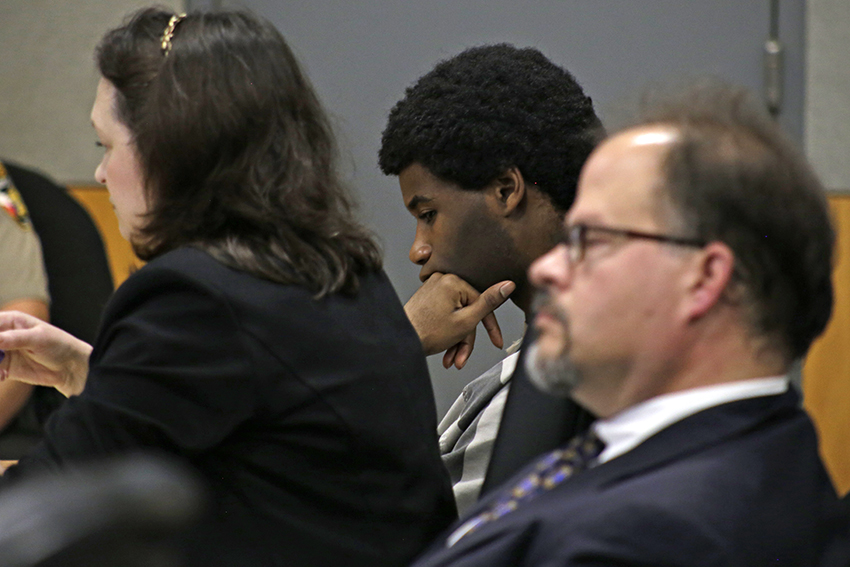Attorneys continued their discussion of the role DNA testing plays in the murder case of dance freshman Haruka Weiser during a pre-trial hearing on Tuesday. The judge has still not ruled on whether the DNA evidence will be admitted in trial.
This was the second in a series of pre-trial hearings in which District Judge David Wahlberg is deciding whether to admit specific DNA evidence into defendant Meechaiel Criner’s trial. Criner was indicted on capital murder charges in 2016 in connection to Wesier’s death. His trial begins July 9.
“At this point, with regard to the analysis (of the specific data), I’m inclined to exclude it, since the underlying data has not been disclosed,” Wahlberg said. “(So) I may or may not exclude evidence related to that exhibit.”
The software in question that was used to test the DNA is STRmix. The use of STRmix is being contested by the defense lawyers because they believe the jury will not be able to understand the results.
The software uses likelihood ratios, which calculate the probability that a person’s DNA is in collected evidence by dividing it by the likelihood that an unknown person's DNA is in the collected evidence.
After testifying at Monday’s hearing about the STRmix software, Jody Koehler, former DNA section manager for a Department of Public Safety crime laboratory in Austin, testified again Tuesday about the data from the likelihood ratios.
“The DNA profile from (Weiser’s first thigh swab) is 27,000 times more likely (to have come from) Criner than if the DNA came from an unknown individual,” Koehler said. “(This) number goes up to 192,000 (times more likely if we calculate that the DNA) came from Weiser and Criner than Weiser and an unknown individual.”
Koehler then testified about inhibitors, which were found in the DNA tests done in the case. Inhibitors can make it difficult to obtain a final result in DNA evidence testing, Koehler said.
“(When an inhibitor is found in the DNA), analysts would have the option to move forward with testing or … get rid of the inhibitors,” Koehler said. “It doesn’t look like any additional work was done (because a final test result was ultimately obtained).”
Unlike the lab analyst who did the DNA testing, Koehler said she probably would have done additional work to get rid of the inhibitors.
Koehler also testified that an electropherogram of a DNA mixture, a plot which contains DNA from two different individuals, was also done on a second swab from Weiser’s right thigh. Based on Koehler’s findings, this electropherogram was inconclusive with regard to finding DNA from Criner in the mixture.
While the DNA electropherograms interpreted by Koehler were originally seen as inconclusive, the same DNA later interpreted by the STRmix software implicated Criner.
“There is not a complete representation of Criner (in the second DNA mixture),” Koehler said. “I remember running it through STRmix and thinking, ‘Wow, I can’t believe I got (a result that included Criner in the DNA).’”
The defense requested the raw data from these electropherograms, but they could not be produced by the prosecution. After this, Judge Wahlberg said he was concerned about the lack of original data, but his decision is still undecided.
Additional pre-trial hearings are set for June 20, 21 and 22 to further discuss the evidence. More experts are expected to testify in court about DNA testing.
Criner’s indictment accused him of multiple charges, including sexual assault, attempted kidnapping and robbery. If convicted, Criner could face life in prison with the possibility of parole in 40 years. Criner, who is now 19, is not eligible for the death penalty because he was under the age of 18 at the time of Weiser’s death.
Criner’s trial is set to begin July 9 and is expected to last two weeks.





















